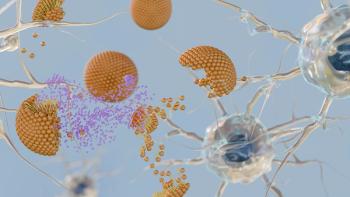
Arcadis' Bill Whitford Discusses 3D Printing for Biologics at INTERPHEX 2024
Bill Whitford, Strategic Solutions leader at Arcadis, reviews the progress made in 3D bioprinting toward commercial biologics production at INTERPHEX 2024.
Editor's note:
Biopharm International® speaks to Bill Whitford, Strategic Solutions leader at Arcadis, on the role and impact of 3D bioprinting for biologics. Whitford is a presenter on the topic of 3D bioprinting at INTERPHEX, held in New York City on April 16–18.
Whitford notes that an important aspect of 3D bioprinting is that it is one approach to 3D cell culture, which he observes is taking over cell culture in many categories. “3D culture provides many unique capabilities it's more biomimetic. Actually, there's nothing natural about growing cells in monolayer on a styrene plate, so there are many 3D culture technologies that employ many different production methods that support many categories of application and individual products,” Whitford states.
On the workflow in a 3D bioprinting facility, Whitford remarks that many complementary and supportive synergistic technologies exist that support each other. “For example,” he explains, “machine vision now is really simple. Ordering 3D printing and the ability to both direct and inspect a nascent print job using artificial intelligence (AI) … they feed on each other. The availability of bioprinters and what we call bio ‘inks’ is, in a commercial sense, what's really driving the final applications.”
“Best practices are being developed for bioprinting,” Whitford also notes, pointing out that there are many different ways of affecting bioprinting, not just with respect to the instrumentation, but with respect to the actual printing. “There is laser-effected printing; there's extrusion-effected printing. There are many different ways of getting the bio ink into the three-dimensional structure, and they all have their advantages. They all provide either a tremendous accuracy and precision or volume.”
In the interview, Whitford also discusses the future of 3D bioprinting in the cell and gene therapy sector. “The ability now—through site-directed CRISPR [clustered regularly interspaced short palindromic repeats]-type engineering—to drive the evolution of a cell towards exactly what phenotype is required is supporting the ability to … develop the bio ink … required to get the initial print job accomplished.”
Newsletter
Stay at the forefront of biopharmaceutical innovation—subscribe to BioPharm International for expert insights on drug development, manufacturing, compliance, and more.





